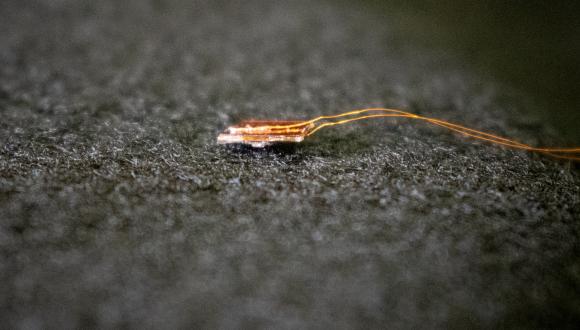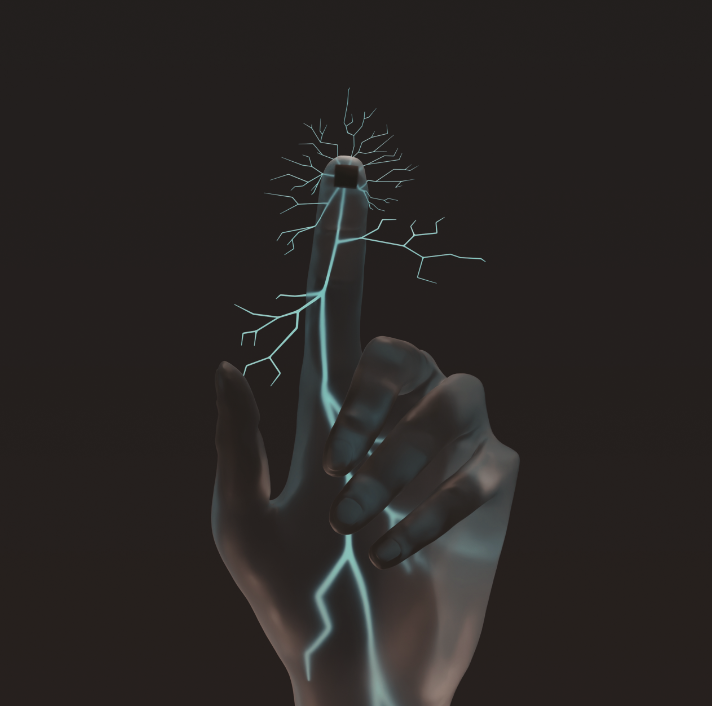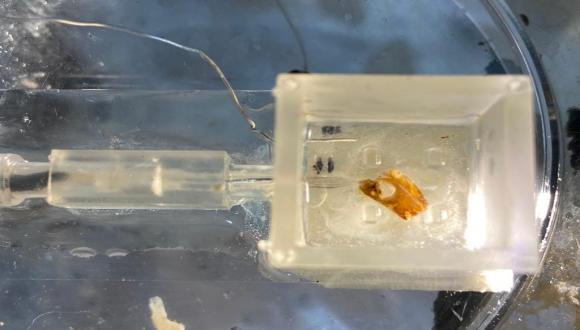Researchers from the Department of Biomedical Engineering have been able to predict both the type of cancer and patients' survival probability based on silent mutations in cancer genomes – a proof of concept that may well save lives in the future.

Select all
Engineering
Social Sciences
Psychology
Medicine
Life Sciences
General
Select all
Research
Prize
Innovations
In Focus
Events
Party
Conference
Ceremony
Event
Focus
Nomination

Research
Researchers from the Department of Biomedical Engineering have been able to predict both the type of cancer and patients' survival probability based on silent mutations in cancer genomes – a proof of concept that may well save lives in the future.

Researchers from the Department of Biomedical Engineering and the Zimin Institute for Engineering Solutions Advancing Better Lives at Tel Aviv University have been able to predict both the type of cancer and patients' survival probability based on silent mutations in cancer genomes – a proof of concept that may well save lives in the future. The results of the groundbreaking study, led by Prof. Tamir Tuller and research student Tal Gutman, were published in NPJ Genomic Medicine.
Silent mutations are defined as mutations that don't change the sequence of amino acids in proteins. In recent years it has been shown that silent mutations, both in and out of the cell's genetic coding region, can affect gene expression, and may be associated with the development and spread of cancer cells. However, the question of whether silent mutations can help identify cancer types or predict patients' chances of survival has never before been investigated with quantitative tools.
In the current study, based on about three million mutations from cancer genomes of 9,915 patients, the researchers attempted to identify the type of cancer and predict survival probability 10 years after the initial diagnosis – on the basis of silent mutations alone. They found that the predictive power of silent mutations is often similar to that of 'ordinary', non-silent mutations. In addition, they discovered that by combining information from silent and non-silent mutations classification could be improved for 68% of the cancer types, and best survival estimations could be obtained up to nine years after diagnosis. In some types of cancer classification was improved by up to 17%, while prognosis was improved by up to 5%.
"Our genome, like the genome of all other living things, contains mutations that can change the sequence of amino acids in the coded proteins," explains Prof. Tuller. "Since these proteins are responsible for the various cell mechanisms, such mutations are involved in turning healthy cells into cancer cells. Other mutations, which don't affect the amino acids, have been called 'silent' and ignored for many years. In our study, about 10,000 cancer genomes of every type were analyzed, demonstrating for the first time that silent mutations do have diagnostic value – for identifying the type of cancer, as well as prognostic value – for predicting how long the patient is likely to survive."

According to Prof. Tuller, the cell's genetic material holds two types of information: first, the sequence of amino acids to be produced, and second, when and how much to produce of each protein – namely regulation of the production process. "Even if they don’t change the structure of the protein, silent mutations can influence the process of protein production (gene expression), which is just as important. If a cell produces much smaller quantities of a certain protein – it's almost as though the protein has been eliminated altogether. Another important aspect, which can also be affected by silent mutations, is the protein's 3D folding, which impacts its functions: Proteins are long molecules usually consisting of many hundreds of amino acids, and their folding process begins when they are produced in the ribosome. Folding can be affected by the rate at which the protein is produced, which may in turn be affected by silent mutations. Also, in some cases, silent mutations can impact a process called splicing, in which pieces of the genetic material are cut and rearranged to create the final sequence in the protein. In short, it appears that silent mutations can actually make a lot of noise, and in this study we were able to quantify their impact for the first time."
To test their hypothesis and quantify the effect of the silent mutations, Prof. Tuller and his colleagues used public genetic information about cancer genomes from the NIH in the USA. Applying machine learning techniques to this data, the researchers obtained predictions of the type of cancer and prognoses for patients' survival – based on silent mutations alone. Then they compared their results with real data from the database.
"The results of our study have several important implications," says Prof. Tuller. "First of all, there is no doubt that by using silent mutations we can improve existing diagnostic and prognostic models. It should be noted that even a 17% improvement is very significant, because there are real people behind these numbers – sometimes even ourselves or our loved ones. Doctors discovering metastases want to know where they came from and how the disease has developed, in order to prescribe the best treatment. If, hypothetically, instead of giving wrong diagnoses and prognostics to five of ten cancer patients, they only make mistakes in four out of ten cases, millions of lives may ultimately be saved. In addition, our results indicate that in many cases silent mutations can by themselves provide predictive power that is similar to that of non-silent mutations. These results are especially significant for a range of technologies currently under development, striving to diagnose cancer types based on DNA from malignant sources identified in simple blood tests. Since most of our DNA does not code for proteins, we may assume that most cancer DNA obtained from blood samples will contain silent mutations."
The new study has implications for all areas of oncological research and treatment. Following this proof of concept, the researchers intend to establish a startup with Sanara Ventures, focusing on silent mutations as a diagnostic and prognostic tool.
Loving the problem is the greatest way to invent

Research
Researchers have developed a sensor that can be implanted anywhere in the body, for example under the tip of a severed finger; the sensor connects to another nerve that functions properly and restores tactile sensation to the injured nerve.

Tel Aviv University's new and groundbreaking technology inspires hope among people who have lost their sense of touch in the nerves of a limb following amputation or injury. The technology involves a tiny sensor that is implanted in the nerve of the injured limb, for example in the finger, and is connected directly to a healthy nerve. Each time the limb touches an object, the sensor is activated and conducts an electric current to the functioning nerve, which recreates the feeling of touch. The researchers emphasize that this is a tested and safe technology that is suited to the human body and could be implanted anywhere inside of it once clinical trials will be done.
The technology was developed under the leadership of a team of experts from Tel Aviv University: Dr. Ben M. Maoz, Iftach Shlomy, Shay Divald, and Dr. Yael Leichtmann-Bardoogo from the Department of Biomedical Engineering, Fleischman Faculty of Engineering, in collaboration with Keshet Tadmor from the Sagol School of Neuroscience and Dr. Amir Arami from the Sackler School of Medicine and the Microsurgery Unit in the Department of Hand Surgery at Sheba Medical Center. The study was published in the prestigious journal ACS Nano.
The researchers say that this unique project began with a meeting between the two Tel Aviv University colleagues – biomedical engineer Dr. Maoz and surgeon Dr. Arami. “We were talking about the challenges we face in our work,” says Dr. Maoz, “and Dr. Arami shared with me the difficulty he experiences in treating people who have lost tactile sensation in one organ or another as a result of injury. It should be understood that this loss of sensation can result from a very wide range of injuries, from minor wounds – like someone chopping a salad and accidentally cutting himself with the knife – to very serious injuries. Even if the wound can be healed and the injured nerve can be sutured, in many cases the sense of touch remains damaged. We decided to tackle this challenge together, and find a solution that will restore tactile sensation to those who have lost it.”
In recent years, the field of neural prostheses has made promising developments to improve the lives of those who have lost sensation in their limbs by implanting sensors in place of the damaged nerves. But the existing technology has a number of significant drawbacks, such as complex manufacturing and use, as well as the need for an external power source, such as a battery. Now, the researchers at Tel Aviv University have used state-of-the-art technology called a triboelectric nanogenerator (TENG) to engineer and test on animal models a tiny sensor that restores tactile sensation via an electric current that comes directly from a healthy nerve and doesn’t require a complex implantation process or charging.
The researchers developed a sensor that can be implanted on a damaged nerve under the tip of the finger; the sensor connects to another nerve that functions properly and restores some of the tactile sensation to the finger. This unique development does not require an external power source such as electricity or batteries. The researchers explain that the sensor actually works on frictional force: whenever the device senses friction, it charges itself.
The device consists of two tiny plates less than half a centimeter by half a centimeter in size. When these plates come into contact with each other, they release an electric charge that is transmitted to the undamaged nerve. When the injured finger touches something, the touch releases tension corresponding to the pressure applied to the device – weak tension for a weak touch and strong tension for a strong touch – just like in a normal sense of touch.

The researchers explain that the device can be implanted anywhere in the body where tactile sensation needs to be restored, and that it actually bypasses the damaged sensory organs. Moreover, the device is made from biocompatible material that is safe for use in the human body, it does not require maintenance, the implantation is simple, and the device itself is not externally visible.
According to Dr. Maoz, after testing the new sensor in the lab (with more than half a million finger taps using the device), the researchers implanted it in the feet of the animal models. The animals walked normally, without having experienced any damage to their motor nerves, and the tests showed that the sensor allowed them to respond to sensory stimuli. “We tested our device on animal models, and the results were very encouraging,” concludes Dr. Maoz. “Next, we want to test the implant on larger models, and at a later stage implant our sensors in the fingers of people who have lost the ability to sense touch. Restoring this ability can significantly improve people’s functioning and quality of life, and more importantly, protect them from danger. People lacking tactile sensation cannot feel if their finger is being crushed, burned or frozen.”

Research
Tel Aviv University researchers connect a real locust ear to a robot

A technological and biological development that is unprecedented in Israel and the world has been achieved at Tel Aviv University. For the first time, the ear of a dead locust has been connected to a robot that receives the ear’s electrical signals and responds accordingly. The result is extraordinary: When the researchers clap once, the locust's ear hears the sound and the robot moves forward; when the researchers clap twice, the robot moves backwards.
The interdisciplinary study was led by Idan Fishel, a joint master student under the joint supervision of Dr. Ben M. Maoz of the Iby and Aladar Fleischman Faculty of Engineering and the Sagol School of Neuroscience, Prof. Yossi Yovel and Prof. Amir Ayali, experts from the School of Zoology and the Sagol School of Neuroscience together with –, Dr. Anton Sheinin, Idan, Yoni Amit, and Neta Shavil. The results of the study were published in the prestigious journal Sensors.
The researchers explain that at the beginning of the study, they sought to examine how the advantages of biological systems could be integrated into technological systems, and how the senses of dead locust could be used as sensors for a robot. “We chose the sense of hearing, because it can be easily compared to existing technologies, in contrast to the sense of smell, for example, where the challenge is much greater,” says Dr. Maoz. “Our task was to replace the robot's electronic microphone with a dead insect's ear, use the ear’s ability to detect the electrical signals from the environment, in this case vibrations in the air, and, using a special chip, convert the insect input to that of the robot.”
To carry out this unique and unconventional task, the interdisciplinary team (Maoz, Yovel and Ayali) faced number of challenged. In the first stage the researchers built a robot capable of responding to signals it receives from the environment. Then, in a multidisciplinary collaboration, the researchers were able to isolate and characterize the dead locust ear and keep it alive, that is, functional, long enough to successfully connect it to the robot. In the final stage, the researchers succeeded in finding a way to pick up the signals received by the locust’s ear in a way that could be used by the robot. At the end of the process, the robot was able to “hear” the sounds and respond accordingly.
“Prof. Ayali’s laboratory has extensive experience working with locusts, and they have developed the skills to isolate and characterize the ear,” explains Dr. Maoz. “Prof. Yovel's laboratory built the robot and developed code that enables the robot to respond to electrical auditory signals. And my laboratory has developed a special device - Ear-on-a-Chip - that allows the ear to be kept alive throughout the experiment by supplying oxygen and food to the organ, while allowing the electrical signals to be taken out of the locust’s ear and amplified and transmitted to the robot.
“In general, biological systems have a huge advantage over technological systems - both in terms of sensitivity and in terms of energy consumption. This initiative of Tel Aviv University researchers opens the door to sensory integrations between robots and insects - and may make much more cumbersome and expensive developments in the field of robotics redundant.
“It should be understood that biological systems expend negligible energy compared to electronic systems. They are miniature, and therefore also extremely economical and efficient. For the sake of comparison, a laptop consumes about 100 watts per hour, while the human brain consumes about 20 watts a day. Nature is much more advanced than we are, so we should use it. The principle we have demonstrated can be used and applied to other senses, such as smell, sight and touch. For example, some animals have amazing abilities to detect explosives or drugs; the creation of a robot with a biological nose could help us preserve human life and identify criminals in a way that is not possible today. Some animals know how to detect diseases. Others can sense earthquakes. The sky is the limit.”